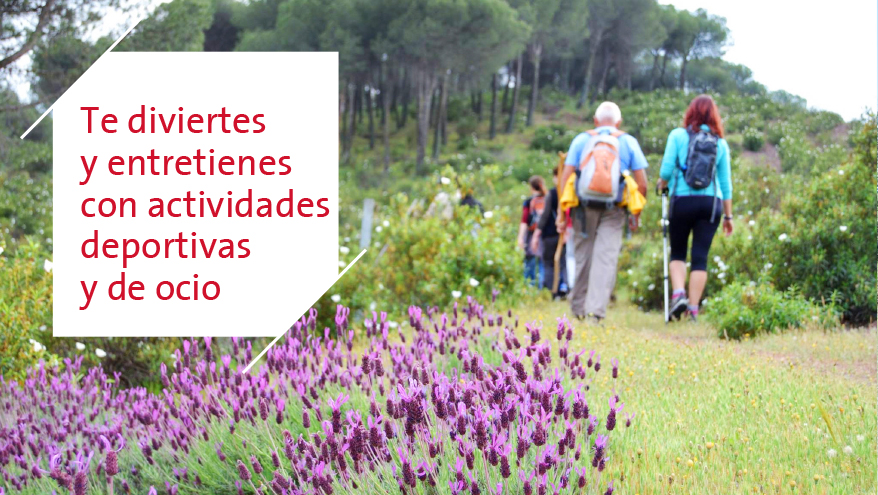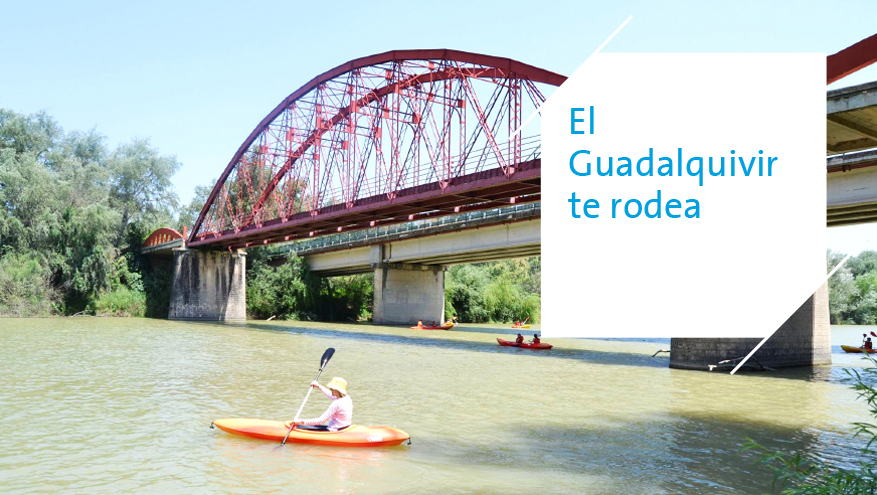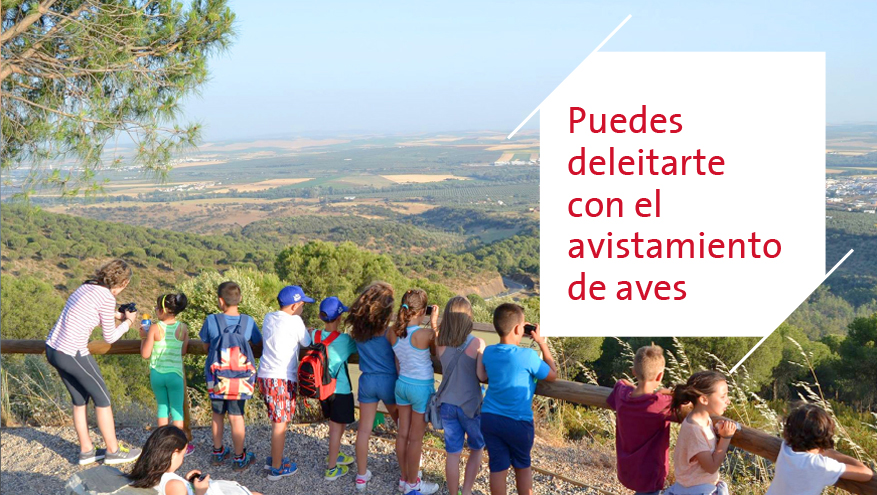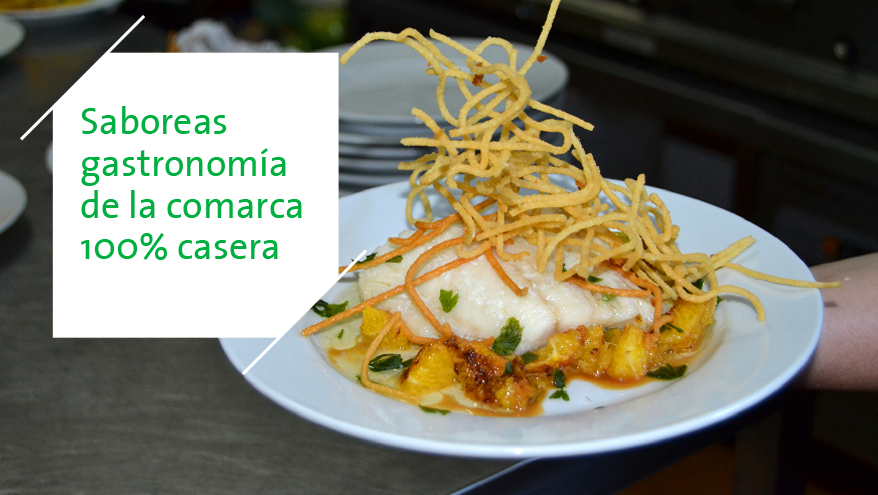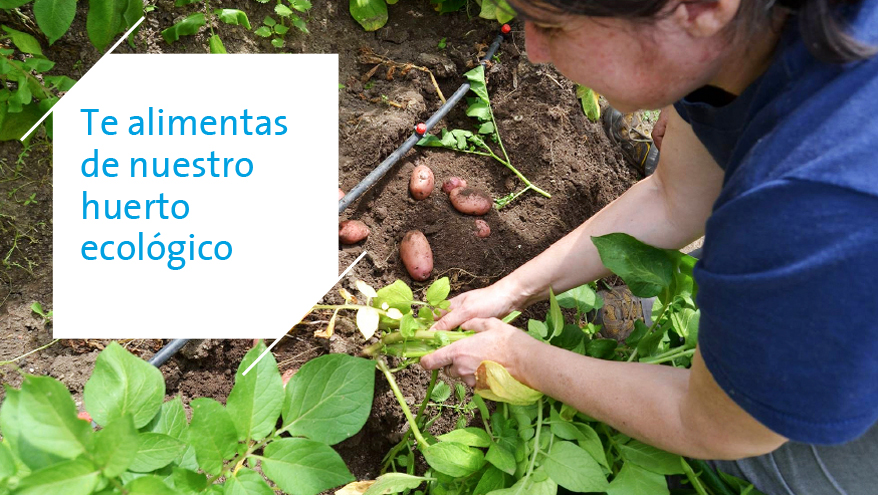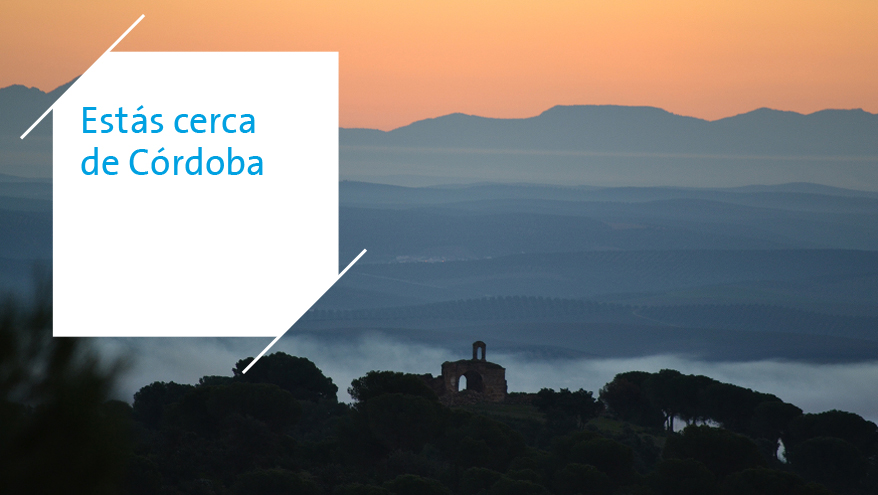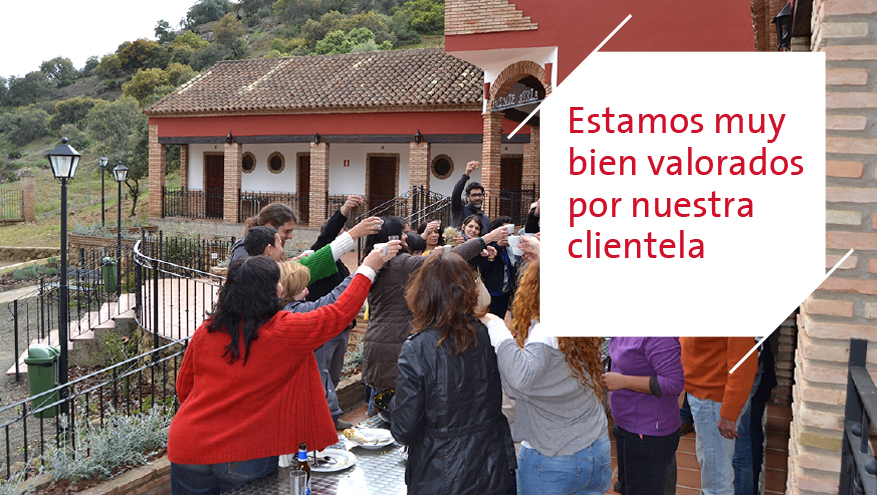10 REASONS TO VISIT RURAL HOSTEL FUENTE AGRIA
1.- A natural setting where you can practice all sorts of leisure and sport activities.
As we approach Fuente Agria area, coming from Villafranca de Córdoba, we will find the huerta or agricultural countryside and the olive grove, that leads, from Fuente Agria Periurban Park, to a combination of Mediterranean forest and aforestation pines among mountains and valleys, with plenty of watercourses and natural resources…These are the beautiful surroundings that frame the Rural Hostel Fuente Agria.
Two of the most rare and emblematic species of the Spanish fauna live in the area: the Iberian lynx (the most endangered feline in the world) and the Spanish imperial eagle (globally threatened species).
You´ll hit the spot by choosing one of the nearest paths close to the Rural hostel Fuente Agria because you´ll enjoy nature in all its fullness: Roman roads, paths through communal mounts, following brooks and the course of the Guadalquivir river, etc. Besides hiking you´ll have the chance of taking up kayak or canoeing, climbing, archery, sport guidance, multiadventure tours, cycling routes, etc. Rural Hostel Fuente Agria maintains agreements with the major companies in Upper Guadalquivir region so you can engage in all those activities into a framework of quality and safety which guarantees an unforgettable experience.
At just a half- hour drive you will find Sierra de Cardeña y Montoro Natural Reserve (a surface of 38.449 ha), declared as a protected natural area since 1989 and adhered to the European Charter of Sustainable Tourism. This is a tour we can set up specially for you.
2.- Guadalquivir river, an ecosystem for discovering by foot or on canoe.
From the entrance to the town of Villafranca de Córdoba, Guadalquivir river constitutes a natural resource endowed with multiple possibilities (nature photography, hiking, kayak or canoeing, etc.). White poplars, black poplars, elms, willows and ashes get mixed with tamarisks, cat´s-tails, giant reeds and osiers (they were used, a long time ago,in the making of baskets and wickerwork), giving shelter to a multitude of species like gray herons, purple herons, a great variety of duck species, little bitterns, purple swamphens, otters, freshwater turtles, barbels, carps, boops boops, perches, etc. Numerous reservoirs regulate its river bed. In those reservoirs you can practice activities like kayak or canoeing, angling or fly-fishing, sailing and of course having a bath but, most of all ,enjoying nature.
If you feel like having a great time, give us a call! We´ll arrange everything for you.
3.- Bird watching
From February to March, migration follow-up of soaring birds is carried out. This is an event organized by Grupo Local de SEO-Córdoba. You can witness them flying through their migration ways from the viewpoint installed on top of the Sierrezuela de Villafranca y Adamuz, about 40 minutes away from Rural Hostel Fuente Agria.
Migratory birds and indigenous birds to the area can be seen during these months: Golden Eagles (Aquila chrysaetos), Spanish Imperial Eagles (Aquila adalberti), Royal Kites (Milvus milvus), Black Kites (Milvus migrans), White Storks (Ciconia ciconia), Cormorants (Phalacrocorax carbo), Buzzards (Buteo buteo), Griffon Vultures (Gyps fulvus), Crows (Corvus corax), Common Kestrels (Falco tinnunculus), Marsh Harriers (Circus aeruginosus), Lesser Kestrels (Falco naumanni), etc.
4.- Taste the gastronomy of Upper Guadalquivir
Rural Hostel Fuente Agria´s menu is regularly updated, suggesting seasonal dishes, delicious samples of the regional cuisine.
Cordovan Upper Guadalquivir is an enormously rich agricultural area. The product par excellence is the olive oil. The varieties Nevadillo Negro (indigenous to the area) and Picual are the most representative.
The fertile soils from la Vega (lowland) del Guadalquivir provide delicious vegetables to the local gastronomy: garlic, cereals, legumes, etc. Casseroles and stews represents an excellent gastronomic achievement, without forgetting dishes like salmorejo serrano(cold tomato cream), ajoarriero (cod stew with garlic and pepper), milk-caps scrambled, whose production involves wild vegetables (wild asparagus, oyster thistle, common sorrel and milk-caps) that are harvested in the area.
The Iberian pig, raised in the vast pastures of the zone, and game meat are specific products of the region. Cured meat and pork sausages, cured local ham, stews and grilled meat are examples of the wide variety available.
Confectionery is linked to religious celebrations, such as Lent and Christmas, and popular festivals, such as Carnival. Honey and pine nuts become the protagonists.
The gastronomy of the area is part of the Cordovan and Andalusian cuisine, therefore we´ll find remarkable and representative examples: gazpachos (cold tomato soup with or without almonds), salmorejo cordobés (cold tomato cream), flamenquín (deep-fried roll consisting of slices of Iberian ham wrapped in pieces of pork loin, coated with egg and breadcrumbs), rabo de toro (Spanish bull tail stew), perol cordobés (rice with meat and vegetables), chicken and rabbit with garlic, fried aubergines in honey, pickled and marinated fish, cheeses and much more besides.
5.- A millennium heritage and an engaged society
Guadalquivir river and its rich and fertile basin are the reason why this land attracted different civilizations, which were drawn here due to its innumerable resources. These people were, as well, looking for the possibility of using the course of the river as a mean of transport and communication.
We can visit the cave of Cañaveralejo in Adamuz. This cave belongs to the Neolithic period. A worthy sample of the splendor of the Roman civilization is the Roman bridge of Villa del Río. The presence of tanks and palatial fortifications like la Alcazaba (citadel) de Bujalance, that belongs to the Muslim period.
Christian reconquest laid the politic, economic and cultural foundations of our towns and villages nowadays. Towers like Garci Menéndez in El Carpio, y la Torre del Homenaje (Homage tower) in Cañete de las Torres Castle, both in excellent state of conservation.
Skipping to the XX century, the bridges of Villafranca de Córdoba and Villa del Río are built to expand the communication networks among la sierra (mountain range), la vega (fertile lowland) and la campiña (countryside).
Holy Week is celebrated all over the zone, having a special prominence the festivities in Montoro.
This region has been the birthplace of remarkable artists at national scope, standing out painters like Blas Moyano,Pedro Bueno,Ginés Liébana, Antonio Rodríguez Luna or Rodrigo Prieto Rojas. We can admire their work among the various museums in Upper Guadalquivir.
Artistic manifestations are present nowadays in the streets of our villages. The region boasts talented writers as Isabel Agüera Espejo-Saavedra, teacher and writer (Villa del Río, Córdoba) or Rafaela Sánchez Cano (1947) from Montoro. Contemporary art also has its place in the scheduled cultural activities of the region, with the seminar on artistic intervention in the urban and natural settings (Scarpia) in El Carpio, celebration of urban culture festivals (VDR JAM), in Villa del Río, or music festivals such as Cañeteando, in Cañete de Las Torres.
We find in flamenco the perfect combination between “arte y compás” (talent and rhythm). There is a long list of cantaores (flamenco singers) in our region, like Antonio Haya “El Jaro”, Juan Antonio Camino, Cantizano o Manuel Gavilán “Gavilán Hijo”, among many others. Flamenco culture, so deeply rooted in this land can be enjoyed at the typical peñas flamencas (enthusiast´s clubs) of the region, accompanied by singing, wine and rhythm.
Nowadays the region is structured around groups and organizations that convey cohesion and dynamism. Special mention should be made of the Federation of Villafranca Women´s Associations, as well as of various groups and social organizations of all sort.
6.- Rural Hostel Fuente Agria´s Vegetable Garden: an educational resource and a gastronomic experience.
“Is there anything better than growing your own food?” That is what followers of organic vegetable gardens say.
We believe in a sustainable rural environment, in healthy relationships between the rural area and human actions, in the production of our own goods to offer them to our visitors, a commitment to learn and teach through the growing of vegetables and fruits.
Rural Hostel Fuente Agria´s organic vegetable garden promotes a less energy-consuming lifestyle, holding back the rate of climate change and the foreseeable exhaustion of oil.
The vegetable garden helps us to undertake educational activities, to encourage involvement, to establish a better understanding of our environment and, above all, to regain the true flavor of vegetables and fruits: genuine tomatoes, scrumptious escaroles, exquisite beans, peppers, onions, radishes, aubergines…They keep showing us, year after year, Mother Earth´s bounty.
7.- Explore the Iberian lynx´s territory
Reintroduction zone for the reproduction and conservation of Iberian lynxs. It implies a particularly important responsibility but, at the same time, it is an attractive and challenging task. This feline population exceeds ten specimens.
Hiking activities guided by specialized tour guides are organized from Rural Hostel Fuente Agria, to explore the key locations where the lynx lives and moves on a daily basis. There we can find a lot of signs of the animal´s presence: pawprints or latrines and with a little bit of luck we may find a lynx, the quintessential feline of the Mediterranean forest.
8.- It´s only 20 minutes away from Córdoba
Rural Hostel Fuente Agria is 20 minutes away from Córdoba by motorway. The city of the Mezquita (Mosque-Cathedral), allows us to taste a bit of a millennial culture, whose heritage can be experienced through its alleys and small squares. A friendly and warm town, joyous and festive.
Among its alleys and little squares scented with orange blossom and jasmine, sure you´ll find the right place to breath it and feel it in good company.
A town where flamenco has pronounced itself with authority and where the gastronomic offer leaves nobody indifferent.
Its historic quarter was declared a UNESCO World Heritage Site in 1994, as it was the Mosque-Cathedral ten years before, in 1984.
It was candidate for the European Capital of Culture 2016 title, becoming finalist to represent Spain.
Besides, the Festival of los Patios in Córdoba was designated Intangible Cultural Heritage of Humanity by UNESCO in 2012.
Córdoba has been the birthplace of three remarkable philosophers: the Roman stoican philosopher Séneca the Younger, Averroes, a Muslim physician and jurist as well and the Jewish scholar Maimónides. The outstanding poets Lucano, Ibn Hazm, Juan de Mena, Luis de Góngora and Ángel de Saavedra Duke of Rivas were also born in Córdoba.
9.- A responsible tourism project of solidarity by CIC Batá
By staying at Rural Hostel Fuente Agria or enjoying a meal at its restaurant, you will be helping people and groups in need through the work that develops the Andalusian association Center of Cooperation Initiatives Batá (CIC Batá).
Rural Hostel Fuente Agria is a project conceived to promote a Responsible Tourism of Solidarity in the area. A sustainable project which aims to generate funds to develop three social projects:
- EMPLOYMENT. Training, counseling and socio-occupational integration for groups at risk of social exclusion. Promotion of employment aimed at the inmates from the Penitentiary Centre of Córdoba and Category D* inmates from the Socio-occupational Integration Centre of Córdoba. Counseling and labor intermediation training actions to facilitate the socio-occupational integration of this group.
- EDUCATION. Education, Communication and Culture campaigns for Peace and Development in educational centres located in several neighbourhoods of Córdoba: Distrito Sur, Moreras and Palmeras. Leisure and educational activities targeted at primary and secondary schools, through methodologies that foster involvement, creation, communication, coexistence and social diversity.
- INTERNATIONAL COOPERATION. Development Cooperation Project which aims to create and develop a Politic Education and social Economy School in Santiago Sacatepéquez, Guatemala. This school represents a significant support towards the formation of indigenous and rural women into the social, political, economic, emotional and personal sphere, and contributes to “Good Living” and to the construction of a fulfilled and worthy life.
You can help to some of these projects by making your donations in the bank account and clicking in:
For more info: www.cicbata.org
For furthermore information about our actions, please visit our web page www.cicbata.org
10.- Our visitors´assesments
Our customers´good impressions and our guests´excellent appraisals are the best reasons we can argue to encourage you to visit us.


